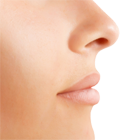A Primer in Skin Care
I knew next to nothing about skin care. I know, I'm a plastic surgeon. I should have had a lot of exposure to skin treatments. But besides some simple customary bits of knowledge (like Retin A is good), I'm just a guy. This stuff baffles me. So it was time to really do some reading. I have spend the last couple of weeks reading both the plastic surgery literature as well as a ton of marketing material about skin care and skin treatments. Wow. So let me divulge a few things I learned. First, I have to give a few definitions since these have always thrown me:
- Solution: A solution is thin and watery. It is usually made up of water or alcohol. One example would be Betadine solution - used to sterilize the skin for surgery. Another good example would be the deep cleaning astringent's used for nightly skin cleansing.
- Lotion: A mixture of oil with a solution. They are thicker and have a softening effect on the skin. If there is too much alcohol they can be drying.
- Cream: A cream is a mixture of oil and water in nearly equal proportions. It is thicker than a lotion. It absorbs well into the outer layer of the skin.
- Gel: A gel is thicker than a solution and is usually an emulsion of a semi-solid in an alcohol base. Tends to be drying. Easy to mix with fragrances
- Ointment: An ointment has a higher oil component - usually 80% oil to 20% water. They are very moisturizing. Think Vaseline.

Armed with a little knowledge, I reviewed many of the available product lines. Obagi, M.D. Forte, Neutrogena, L'Oreal, and others whose names all run together. I have to say I really like the Obagi system. They have a number of different product groupings depending on the area treated and the goal. Let's focus on their Nu-Derm System. I was so impressed I actually got the full set for my wife. (Not that she needed any skin care.) She really likes the system too.
The Obagi Nu-Derm system has multiple components or steps. The first is Prepare. This step offers the option of a foaming gel based cleanser (remember gel is more drying so it is better for oily skin). There is also a more gentle cleanser for dryer skin. Both of these are followed up by a toner to adjust the pH of skin to allow better penetration of the next steps.
Following preparation is the Improve step. There are a couple of choices here. One is a mild bleaching agent containing 4% hydroquinone. This serves to reduce hyperpigmentation and even the skin tones. Following this is a choice of two exfoliants. An exfoliant removes old skin cells and promotes new skin formation to give a healthier complexion. The first choice is a mild 3% plant acid and the second is a stronger alpha hydroxy acid preparation.
Next is an optional Stimulate step. The reason I describe this as optional is that the ingredients are similar to the previous step - skin tone smoothers and non prescription skin brighteners.
Of course, since you have invested all of this effort, you need the Protect step. This includes a choice of sun block as well as a SunFader to remove blotches and smooth the skin tones.
There are also complimentary products that can be used around the eyes and to moisturize dry flaky skin. And lastly is the option of adding tretinoin (Retin A) which is both a fine acne treatment as well as an excellent treatment for fine wrinkles.
I'm getting long winded so I will leave this discussion for now. Post if you have any questions and I would be happy to answer them - even if it takes a little research on my part! And don't forget to check out the page on my website involving fillers and Botox.

